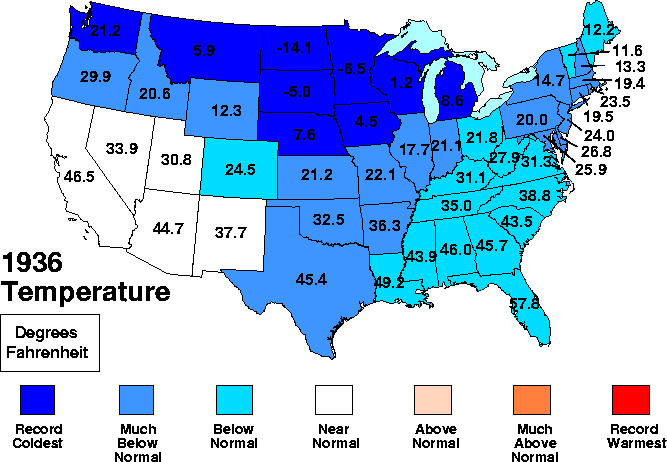Weathering the Winter of 1936 in Calhoun County
Calhoun county, Iowa

Beck O’Brien
1/22/1936
The winter of 1936 was one of the worst of the century. “For 21 days the thermometer registered below zero, and hit -27 degrees on January 22, 1936.” Velma Gleason Rook, a local schoolteacher, mother of one daughter at the time (later two), and wife of Creed Rook, wrote an account of how the town worked together to weather the winter.
Velma Rook would later go on to become Publicity Chairman for the Calhoun County History Book, as well as president of the Women’s Council and secretary-treasurer of Church Women United in Rockwell City. She taught in Calhoun County schools for a total of twenty-seven years. Much of the following account is from her observations that winter.
The snow began in December, and by January there were 25 inches on the ground. One account said that trains with five engines couldn’t push through the drifts on the tracks, some of which were as high as 25 feet. As for automobiles, the visibility during the storms was so poor, the plows could not safely clear the roads. Many townspeople pitched in with shovels to help clear the roads.
“When the crew arrived at our place,” Rook wrote, “I had hot coffee, cookies, rolls, or fresh cake for them, before they continued the next mile and a half to the highway. Several times they reached our home only to encounter a new storm blocking everything again.”
As the winter continued on, resources dwindled. Sows and pheasants were dying, over 300 rural telephones were out of order, medical services were difficult to acquire since doctors were stranded in their homes, coal was scarce, and the journey to get water from the well was a challenging one.
“Every drop of water for drinking, cooking, bathing, and laundry was carried from the well in five-gallon pails almost the length of a city block over huge drifts. Frequently as we reached the last drift, our feet would break through the crust of snow and the water would spill – often on us. Some days we chored [sic]all day long and didn’t even remove our wraps to eat.”
Heat was perhaps the most needed and most difficult to sustain resource. When the Lohrville School ran out of coal, it closed for three weeks. Since the trains carrying the coal could not power through the drifts, rationing was the best option. During the day, the Rook family burned wood and corn cobs for heat. At night, they used coal.
When the coal gave out, “it was impossible to keep the fires going so we awakened to frost on the blankets and the dipper frozen in the water pail. We tried to keep our year-old baby in her bed near the stove as the floors were so cold her feet suffered frostbite.”
When the trains were able to make it through, the high demand for coal made it necessary to ration the amount given to each family.
The Rooks were key suppliers of milk to the town of Richards. Velma writes, “We would wrap the milk bottles in newspapers, put them in a gunny-sack and Creed would carry the milk on his back to the store. Later as the snow crusted and would hold up a team, the mules were hitched to the sled and went over the fences and across the fields to the store.”
On February 13th and February 27th there were two notable blizzards. The one on the 13th provided a dumping of snow that created the “worst blockade of the rails since 1898.” In order to help the passage of two locomotives, townspeople “went out with shovels and made steps out of the snow and passed the snow up the steps and over the top of the bank.”
After a brief period of “almost spring like weather,” the storm on February 27th led to a total of 40 inches of snow on the ground at the end of the month. Velma wrote, “With a cellar well stocked with canned fruits, meat, and vegetables we were never hungry but we were often cold.”
Reflecting on the winter of 1936, Velma conceded that “One good thing that came out of the blizzards was that there were no criminal cases reported during that time.”
